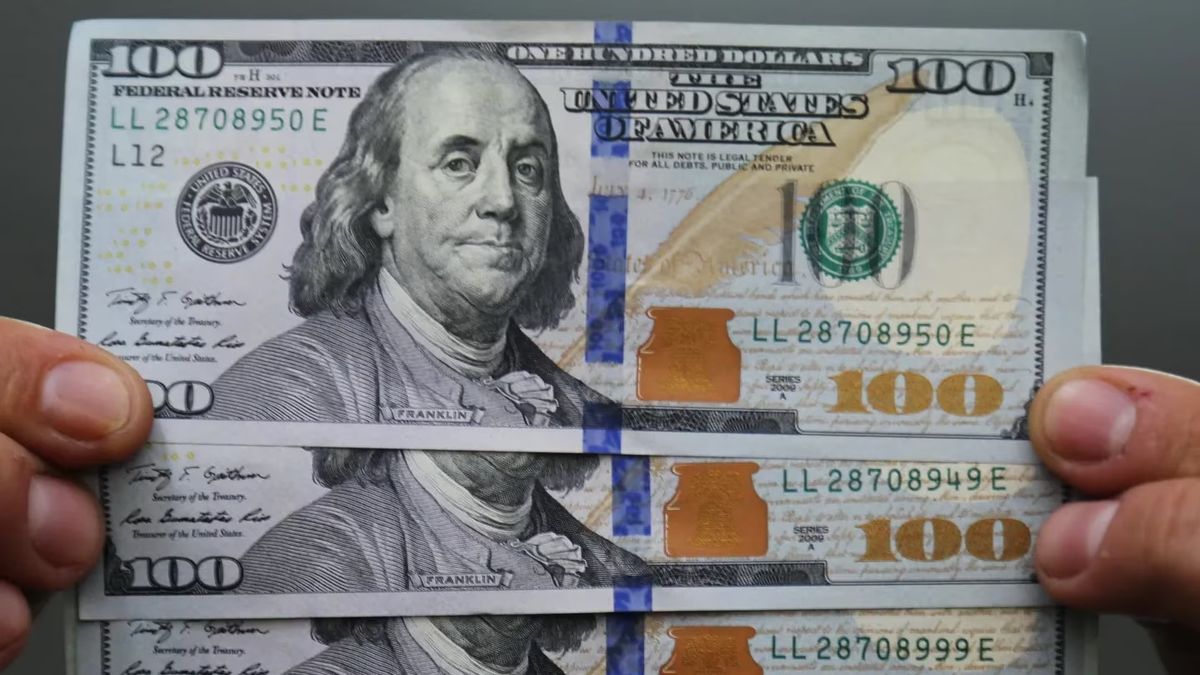He Minister of Economy, Luis Caputoanticipated in mid-July that Argentina will be more expensive in dollars and that these data reflect are already seen on the shelves. And it is that, measured in dollars at the official exchange rateOf the 46 goods surveyed, 38 are above the international average. For example, he says, a litre of milk in our country costs US$2, while on average in the region it is US$1.19.
Although it is complex to say this for the economy as a whole, a series of variables can be analyzed that give indications of how expensive/cheap the Argentine economy is compared to other countries in the region,” said a report by PxQ, the PxQ consultancy led by the economist. Emmanuel Alvarez.
Added to this is a tendency to the devaluation of the currencies of neighbouring countries, in response to a strengthening of the dollar and a fall in commodity prices. For example, the Brazilian real depreciated by 6.3% against the dollar in June.
Therefore, the doubt that remained in the market is whether this New inflation in dollars recorded in July will it remain a short-lived phenomenon or if it can be the tone of the coming months.
The strategy is not modified
Caputo insists that the crawling peg at 2% monthly and the blend are maintained at all costs and with a primary fiscal surplus of 1.7% of GDP projected for the year, there is no fiscal dominance. It does not matter that with a country risk of 1,550 bps and a BCRA without dollars, questions about the financial program arise.
The first spike in high dollar inflation occurred in February, when a consumer price index (CPI) of 13.2% was combined with a 14% drop in the value of the parallel dollar. This combination led to a remarkable 31% increase in dollar prices in just one month, leading to debate about the accelerated appreciation of prices in the country.
At the time, some argued that this increase reflected a necessary adjustment that would place Argentina in its historic position within the regional price ranking. On the other hand, there were concerns about the viability of maintaining this inflationary pace through an exchange rate anchor.
The situation later stabilized to a certain extent. The CPI showed a slowdown and the sharp falls in the value of the parallel dollar moderated. However, in March, inflation in dollars stood at 9.5% based on the “contado con liqui” (cash with liquidation) and in April it remained at 8%.
In May, a change in trend was observed with dollar inflation of 4.2%, accompanied by a strong reaction in the foreign exchange market. The combination of relatively stable prices and an increase in the dollar rate resulted in a first decrease in dollar prices during the year..
Despite this temporary relief, volatility in the foreign exchange market was expected to continue, driven by the reduction in BCRA reserves, uncertainty about IMF financial assistance and the government’s praise for the exchange rate controls.
“A year ago we pointed out that the prices of Argentine products were among the most expensive in the region measured at the official exchange rate, while at the parallel exchange rate Argentina was cheap for food and beverages and at an average level in clothing, vehicle acquisition, medicines and electronics. As of June 2024, the main difference observed is that Food is starting to become expensive when measured at the parallel exchange rate and the rest of the goods are very expensive (up to 150% difference in household appliances)”, PxQ stated at the time.
The challenges of the Government
The Government is betting heavily on through money laundering and RIGI, enough dollars are brought in to allow for an orderly exit from the corralito. Likewise, the end of the Country Tax in December of this year could be a window of opportunity for the lifting of exchange restrictions. However, the challenges facing the country until then are multiple.
The first is the lack of reserve accumulation. In the last two months, The BCRA stopped being a net buyer in the official exchange market and stopped the accumulation process of the first few months. The second, intrinsically related, is the increase in the exchange rate gap. Also, the possibility that the inflationary process will overheat.
Relative price corrections are still pending and will continue to put pressure on the general price index. “Finally, the Government is betting its political capital on the disinflation process; the only achievement to show. Unlike other periods where there was exchange rate appreciation, This did not translate into an increase in real income or activity, but rather coexisted with a process of adjustment, recession and falling income.“, states a CESO report.
He added that while waiting for the entry of genuine dollars to release the exchange rate restrictions, the Milei-Caputo economic program aims to sustain the current system through adjustment and recession.
CESO.png
If the disinflation process is reversed, or if the government has to deepen the adjustment even further by December due to the loss of reserves, it is likely that part of the support it enjoys today will be diluted.
The document warns that part of society may tolerate this adjustment only because of the promise of price stabilization. Therefore, if the disinflation process is reversed, or if due to the loss of reserves the government must further deepen the adjustment to reach December with the possibility of leaving the currency controlsit is likely that some of the support he enjoys today will dilute, and with it his electoral aspirations in 2025.
And in the first months of 2024, although it is observed that the bulk of registered workers achieved salary increases above the variation in the parallel exchange rate, Salaries measured in dollars continue to be low in historical comparison.
The year 2024 is within the 3 stages of lowest dollar wages in the last 30 years along with 2023 and the post-convertibility crisis period (2002-2007). Compared to 2016-19, formal income measured in hard currency is between -60% and -35% lower,” concludes the PxQ report.
Source: Ambito




